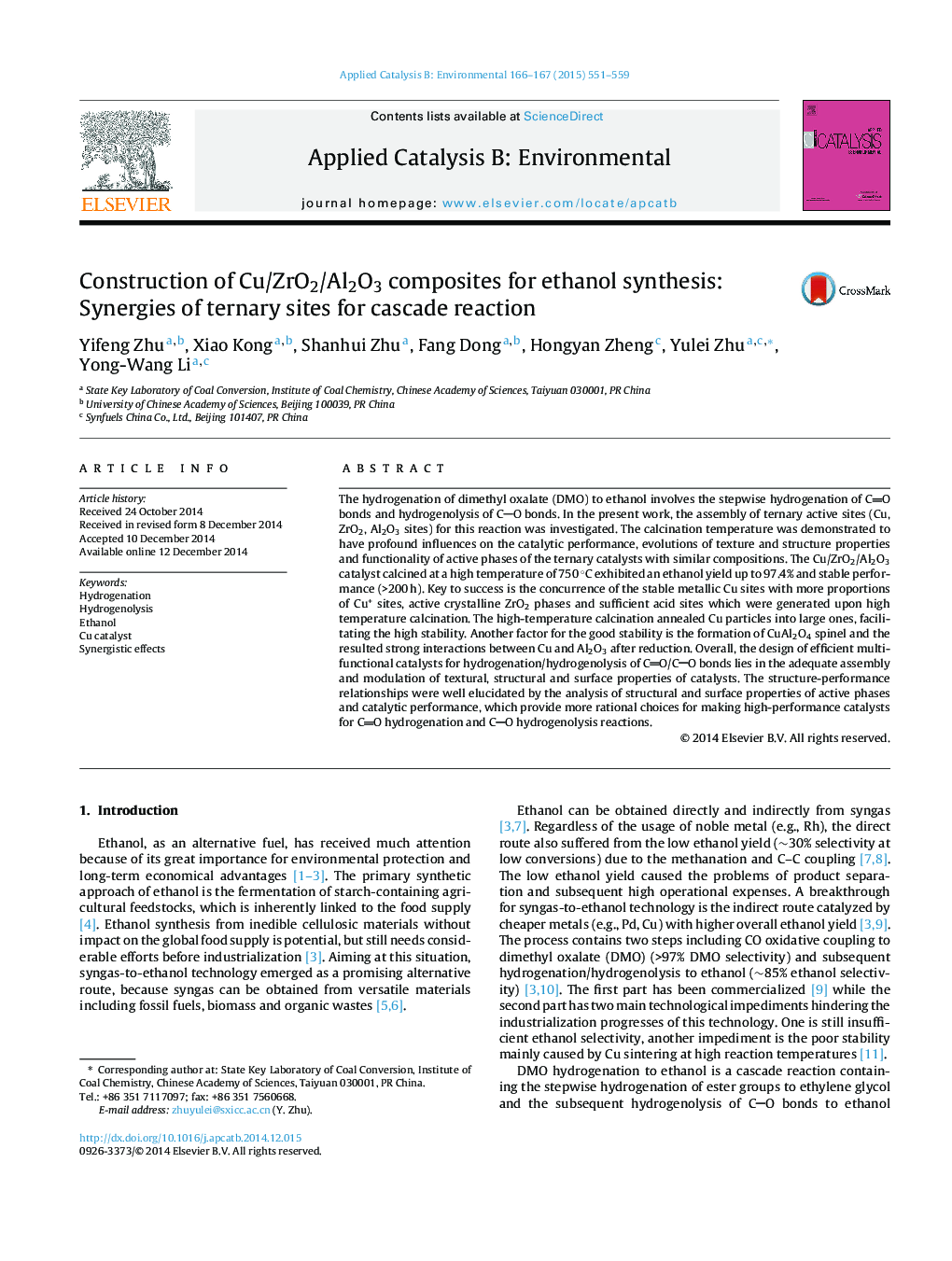| Article ID | Journal | Published Year | Pages | File Type |
|---|---|---|---|---|
| 45750 | Applied Catalysis B: Environmental | 2015 | 9 Pages |
•Synergies of ternary sites were proposed for the cascade synthesis of ethanol.•The calcination temperature controls the functionality of ternary synergetic sites.•The catalyst annealed at high temperature of 750 °C exhibited the best performance.•The ethanol yield up to 97.4% and good stability (>200 h) were obtained.
The hydrogenation of dimethyl oxalate (DMO) to ethanol involves the stepwise hydrogenation of CO bonds and hydrogenolysis of CO bonds. In the present work, the assembly of ternary active sites (Cu, ZrO2, Al2O3 sites) for this reaction was investigated. The calcination temperature was demonstrated to have profound influences on the catalytic performance, evolutions of texture and structure properties and functionality of active phases of the ternary catalysts with similar compositions. The Cu/ZrO2/Al2O3 catalyst calcined at a high temperature of 750 °C exhibited an ethanol yield up to 97.4% and stable performance (>200 h). Key to success is the concurrence of the stable metallic Cu sites with more proportions of Cu+ sites, active crystalline ZrO2 phases and sufficient acid sites which were generated upon high temperature calcination. The high-temperature calcination annealed Cu particles into large ones, facilitating the high stability. Another factor for the good stability is the formation of CuAl2O4 spinel and the resulted strong interactions between Cu and Al2O3 after reduction. Overall, the design of efficient multifunctional catalysts for hydrogenation/hydrogenolysis of CO/CO bonds lies in the adequate assembly and modulation of textural, structural and surface properties of catalysts. The structure-performance relationships were well elucidated by the analysis of structural and surface properties of active phases and catalytic performance, which provide more rational choices for making high-performance catalysts for CO hydrogenation and CO hydrogenolysis reactions.
Graphical abstractFigure optionsDownload full-size imageDownload as PowerPoint slide
